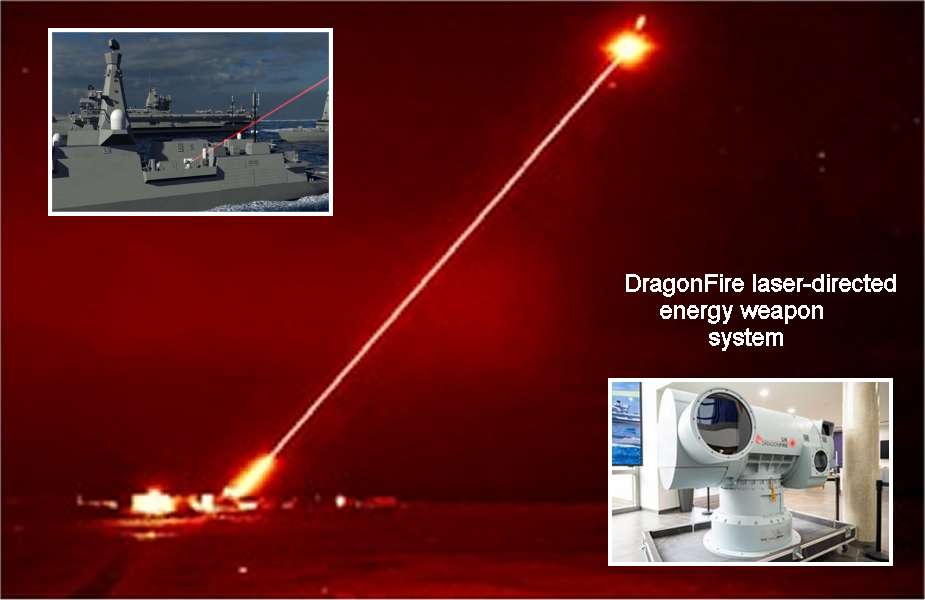On April 12, 2024, the UK Ministry of Defence announced an acceleration in the deployment of the DragonFire laser weapon systems on Royal Navy vessels. Initially scheduled for 2032, the installation of this technology will be advanced to 2027, following the implementation of new reforms in defence procurement procedures.
Follow Navy Recognition on Google News at this link
 DragonFire Laser Directed Energy Weapon system (Picture source: UK MoD)
DragonFire Laser Directed Energy Weapon system (Picture source: UK MoD)
The DragonFire system is capable of engaging aerial targets at a cost of approximately £10 per shot, with precision equivalent to hitting a coin from a kilometre away. This capability provides defence against drone and missile threats.
The laser system, along with its associated targeting apparatus comprising an electro-optical camera and a secondary lower-power laser for imaging and tracking, is mounted on a turret. Estimated to belong to the 50 kW class, the laser is primarily designed to protect both land and maritime targets against threats like missiles and mortars. It's important to note that many details regarding this laser system remain classified, underscoring the sensitivity of the technology involved.
Defence Secretary Grant Shapps stated that these changes in procurement procedures aim to provide defence equipment more rapidly and to explore export opportunities.
The introduced reforms include the establishment of rapidly deployable minimum capabilities and broader involvement of experts in the early stages of acquisition. According to Paul Hollinshead, CEO of the Defence Science and Technology Laboratory (Dstl), the development of DragonFire, in collaboration with MBDA, Leonardo, and QinetiQ, demonstrates the UK's commitment to maintaining sovereign technological capability.
The laser-directed energy weapon system, capable of engaging targets at the speed of light, is seen as a cost-effective alternative to missiles for certain defensive missions.
The new procurement procedures aim to avoid delays and cost overruns often encountered in the past by involving the defence industry earlier in the process. The Ministry of Defence hopes to ensure efficient and timely delivery of critical technologies for the British Armed Forces.
Naval forces worldwide are advancing their capabilities with the integration of laser weapons, ushering in a new era in maritime warfare. The U.S. Navy, in particular, has made significant progress with the deployment of systems such as High Energy Laser with Integrated Optical-dazzler and Surveillance (HELIOS) and Optical Dazzling Interdictor, Navy (ODIN).
These laser weapons provide a cost-effective solution for countering threats such as drones, small boats, and surveillance equipment, with HELIOS offering a high-power option for more intensive defensive and offensive operations. The HELIOS system, developed by Lockheed Martin, has been integrated into Arleigh Burke-class destroyers.



